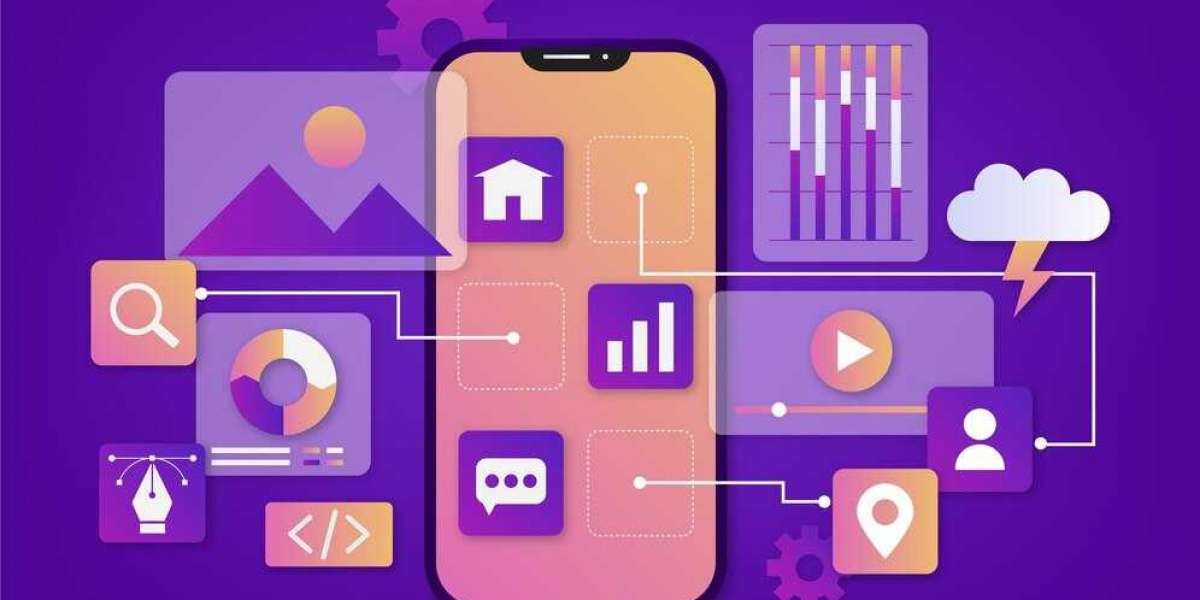In today’s fast-paced digital world, users expect seamless, visually engaging experiences when they interact with websites or mobile apps. High-quality images and videos play a central role in delivering these experiences—but they can also cause significant slowdowns if not optimized properly. For businesses, especially those operating as an android application development company, ensuring efficient multimedia content is not just about aesthetics—it’s about performance, user retention, and SEO.
This article explores the significance of optimizing images and videos in web and app development, techniques used for optimization, tools available, and how professional partners like Pixel Genesys can elevate digital experiences by blending creativity with performance.
Why Image and Video Optimization Matters
Visual content is essential for storytelling, branding, product showcasing, and user engagement. However, unoptimized assets can significantly harm performance.
Key Reasons for Optimization:
Faster Load Times: Large files slow down page loading, which directly affects bounce rates and user satisfaction.
Better User Experience: Lightweight media ensures smooth navigation and quicker access to content.
SEO Advantage: Search engines prioritize fast-loading websites and apps, impacting visibility.
Reduced Bandwidth Costs: Optimized files reduce server load and mobile data consumption.
Cross-Platform Compatibility: Different devices and network conditions demand responsive, adaptive media delivery.
Whether you're a mobile application development company or a solo developer, mastering optimization is non-negotiable.
Image Optimization in Web and App Development
1. Choosing the Right File Format
Different file types serve different purposes:
JPEG: Best for photographs; supports compression with minimal quality loss.
PNG: Suitable for transparent images; retains high quality but larger file size.
WebP: Modern format offering superior compression and quality balance—ideal for web and mobile.
SVG: Scalable Vector Graphics are perfect for logos and icons without pixelation.
2. Compression Techniques
Compression reduces file size while retaining as much visual fidelity as possible:
Lossy Compression: Reduces size by eliminating non-essential data (e.g., JPEG).
Lossless Compression: Retains all data; better for simple graphics (e.g., PNG, GIF).
Use tools like TinyPNG, ImageOptim, or Adobe Photoshop for compression before deployment.
3. Responsive Image Sizes
Serving images based on device specifications improves performance:
Use the
srcsetattribute in HTML or adaptive image delivery libraries.Serve high-resolution images for retina displays and smaller sizes for standard devices.
4. Lazy Loading
Lazy loading delays the loading of images until they appear in the viewport. This is essential for image-heavy pages or mobile game apps with multiple assets.
Example:
5. Content Delivery Networks (CDNs)
CDNs like Cloudflare, Amazon CloudFront, and Akamai cache media files closer to users, reducing latency and accelerating delivery.
For any android application development company, integrating CDNs ensures consistent performance regardless of user location.
Video Optimization in Web and App Development
1. Selecting the Right Format and Codec
MP4 (H.264): Widely supported and efficient for general use.
WebM: Modern, open-source format great for web-based videos.
H.265/HEVC: High Efficiency Video Coding offers better compression but may not be universally supported yet.
2. Resolutions and Bitrates
Avoid 4K unless necessary—1080p or even 720p is often sufficient for mobile devices.
Optimize bitrate for a balance between quality and performance.
3. Adaptive Streaming
Use streaming protocols like HLS (HTTP Live Streaming) or DASH for delivering videos that adjust quality based on the user’s bandwidth.
This is crucial for apps and games delivered via mobile application development company channels, where users have varying internet conditions.
4. Thumbnail Optimization
Don’t forget to optimize thumbnails—use JPEG or WebP formats with compression to save loading time.
5. Autoplay and Muted Settings
When videos autoplay, ensure they are muted to comply with user settings and improve UX. Always provide controls or options to pause.
Tools for Image and Video Optimization
Here’s a list of popular tools and libraries used by industry professionals and companies like Pixel Genesys:
Image Tools:
ImageMagick: Command-line tool for batch processing.
Kraken.io: API for real-time image optimization.
Squoosh: Browser-based image compressor by Google.
Video Tools:
HandBrake: Open-source video transcoder.
FFmpeg: Command-line utility for video encoding, decoding, and streaming.
Shaka Player: For adaptive streaming of videos.
Automation Tools:
Webpack Image Loader: Automates image optimization during build.
Glide (for Android): Efficient image loading and caching library.
Lottie: For lightweight animations in mobile apps using JSON-based files.
Optimization in Mobile Apps vs. Websites
Though there’s overlap, mobile app development presents unique challenges:
Considerations for Mobile Apps:
Limited bandwidth and storage.
Need for offline access.
Performance constraints on lower-end devices.
A proficient android application development company ensures image and video resources are optimized during build and loaded efficiently during runtime. For instance:
Preload essential assets.
Compress resources during build using Gradle.
Use caching libraries like Picasso or Glide.
Progressive Loading in Games
In mobile game app development services, progressive loading allows users to start gameplay while larger assets continue downloading in the background. This significantly improves user experience and retention.
Case Study: Pixel Genesys Approach to Optimization
Pixel Genesys, a rising name in the tech space, sets a gold standard in balancing visual quality and performance. As an innovative mobile application development company, they prioritize media optimization in every project—whether it’s a stunning ecommerce app or a complex multiplayer mobile game.
Here’s how Pixel Genesys handles multimedia:
Initial Audit: Analyze asset sizes, resolutions, and formats.
Optimization Pipeline: Integrate automated image compression and responsive breakpoints.
Video Strategy: Employ adaptive streaming, efficient codecs, and fallback formats.
Game Optimization: Compress spritesheets, use low-poly assets, and stream video cutscenes.
Whether you need a sleek corporate app or immersive game via their mobile game app development services, Pixel Genesys ensures media optimization isn’t an afterthought—it’s built into the development lifecycle.
Best Practices for Developers and Companies
Here’s a quick checklist for any developer or android application development company looking to optimize images and videos:
Always compress images before uploading.
Use modern file formats (WebP, MP4, H.265).
Implement lazy loading for non-critical assets.
Use CDNs to deliver media quickly across regions.
Monitor app and site speed with tools like Lighthouse or PageSpeed Insights.
For mobile games, use progressive asset loading.
Ensure cross-device compatibility for all visuals.
Test visual performance under different network conditions.
Future of Image and Video Optimization
As technology evolves, so do optimization methods:
AI-powered optimization (e.g., Cloudinary) dynamically selects the best format and size based on the user.
Next-gen formats like AVIF promise better compression ratios.
Edge computing enables real-time processing of video and image files close to the user.
Pixel Genesys is already exploring AI-based optimization solutions to stay ahead in the competitive space of mobile application development companies.
Conclusion
Optimizing images and videos is no longer optional—it’s essential for delivering fast, efficient, and immersive digital experiences. Whether you’re building a responsive website, a high-performance mobile app, or the next big mobile game, media optimization should be a foundational element of your development strategy.
Partnering with a forward-thinking android application development company like Pixel Genesys ensures that your applications don’t just look good—they perform at their peak. Whether you're seeking mobile application development company expertise or tailored mobile game app development services, media optimization is the silent powerhouse behind every successful user experience.







